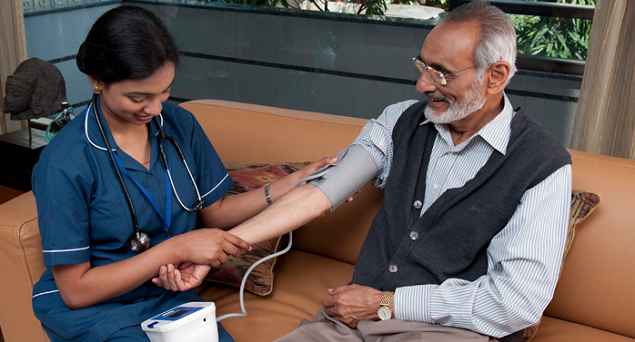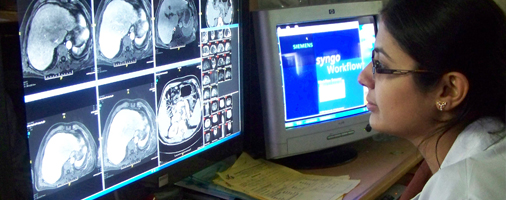
The real picture of skillgap in Indian Healthcare, and some ways to fix it
A recession is a hammer that strikes at the wrong place at the wrong time. Always.
And the global economy is still reeling under the effect of the last one. Bleak pictures painted with figures and charts come out for all sectors around the world. And healthcare- even though crucial, is not exempt from this.
The slow economic recovery indicates a higher expenditure in the making. It’s expected that healthcare expenditure will rise to $ 9.3 trillion globally over the 2014-2018 period-a growth of 5.2 percent per year.
The global healthcare outlook for 2015 from Deloitte brings forth some facts that show that wallets are gonna shrink. They include:
- The increasing health requirements of ageing as well as growing populations
- Enhanced market expansion
- Higher prevalence of chronic diseases
- Improvements in health infrastructure
- Improved patient treatment methods
- Technology upgradation
Given such a backdrop it’s not only developing countries that find it cumbersome to provide adequate number of qualified professionals. The developed nations are also finding the going tough.
The yawning skillgap in India
As for India, one of the major challenges definitely will be overcoming the poor doctor-patient ratio. Currently, the ratio is 0.7 doctors per 1,000 people. And 1.5 nurses per 1,000 people. The ideal put down by WHO is 2.5 doctors and nurses for every 1,000 persons.
As per a recent study conducted by the Public Health Foundation of India for Ministry of Health and Family Welfare, the total skill gap is about 97.9%-that’s a figure applicable across multiple health workforce categories.
Out of this, radiography and imaging accounts for 88.7% which implies a tremendous shortage of medical laboratory technicians. It was found that Uttar Pradesh faced the greatest need of radiology and imaging professionals(ajusted estimate-3,600).
But UP is not alone in the dearth. Other states with high skill gaps include Maharashtra, Bihar, West Bengal, Andhra Pradesh, Gujarat, Assam and Delhi.
These are some of the states with the widest gaps in health manpower:
- Maharashtra- an overwhelming gap of 5.65 lakh healthcare professionals
- Bihar- 5.28 lakh
- West Bengal-4.62 lakh
- Andhra Pradesh-4.22 lakh
- Tamil Nadu-3.62 lakh
Dearth of radiology and imaging professionals

The lack of radiology and imaging professionals is seen in many categories in the multi-segmented medical imaging sector: in corporate hospitals, private imaging centers, academic centres, corporations, smaller private hospitals, state run imaging centres and government hospitals.
To bring about a change , efforts have been underway since 2013 to upgrade the planned courses and also diversify the standards of practice so that the quality of medical streams-particularly in the radiology and imaging domains could be improved. Initiatives to improve the skills of the relevant health professionals are also in place.
India’s healthcare industry-the ways to upgrade
The healthcare industry in India currently incorporates updated information and some of the best professionals in the world. However, mere improvement in the medical technology would not result in a higher quality of service delivery.
The following could be measures along this way:
- To begin with, the obvious need to be tackled- more number of professionals are needed
- Continual enhancement of the skillsets of the professionals
- Aside from the professionals, others in the healthcare system should also actively participate in improving the system. These include medical institutions, professional bodies, industry bodies, government agencies and health technology suppliers
- Adapting medical education to match the preferred outcomes
The role the government needs to play

Since the government forms the quintessential body in many matters of significance, it’s imperative that the government must bridge policy gaps so that enough qualified human resources for health(HRH) are generated. Their services would be required in primary, secondary and tertiary levels of healthcare delivery in the country.
To reduce the demand-supply gap of skilled workforce, the following would be needed:
- Significant investment in infrastructure
- Introduction of newer models like walk-in clinics as opposed to a traditional hospital
- Virtual access to doctors
- More diagnostic centres. This makes sense since it brings about better awareness and leads to timely treatments.
It will be juvenile to assume that positive changes in the healthcare system could be brought about by the doctors or paramedics alone. It requires the concerted effort of practically all in the hierarchy, starting with the government and the medical institutions and stretching to educational institutes and more.
If India is to emerge an economic superpower, it’s gonna require its health. But the current system is way inadequate for that.
With inputs from the Economic Times
Image credits:wikipedia, dcaimaging, indiatomorrow.net, thelittlenews